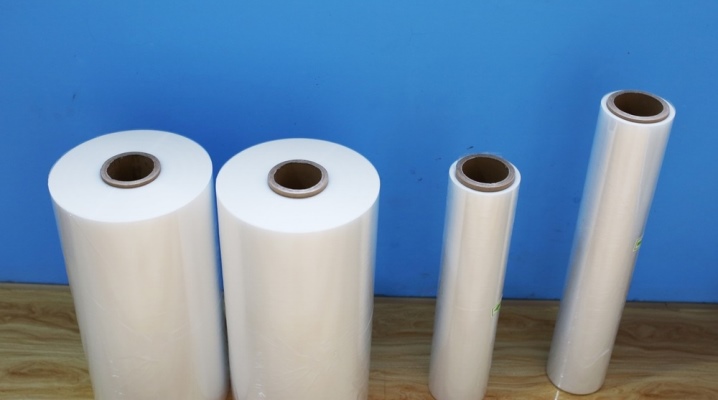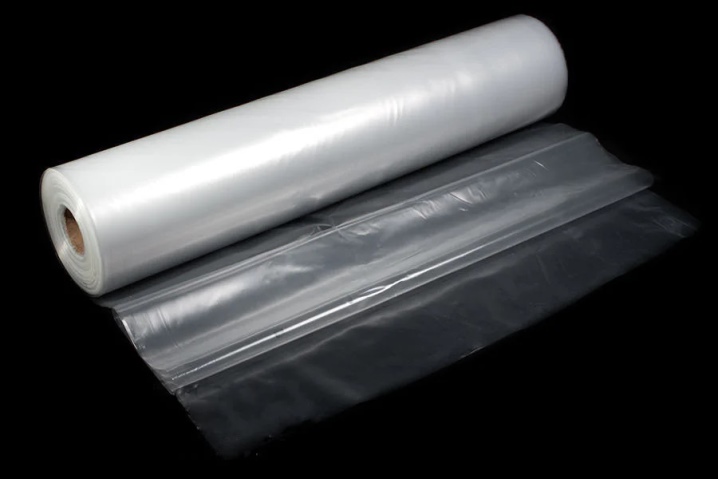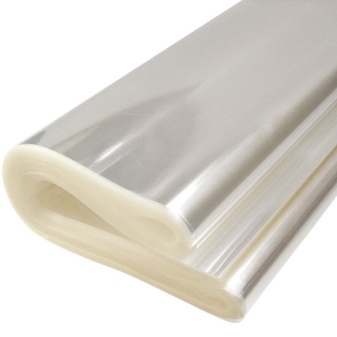Features and uses of LDPE film

Polyethylene is the most demanded plastic material, having thoroughly entered the everyday life of every person. The film made from high-pressure polyethylene (LDPE, LDPE) is in deserved demand. Products from this material can be found everywhere.

What it is?
LDPE film is a synthetic polymer obtained at pressures from 160 to 210 MPa (by means of radical polymerization). She possesses:
- low density and transparency;
- resistance to mechanical damage;
- flexibility and elasticity.
The polymerization procedure is carried out in accordance with GOST 16336-93 in an autoclave reactor or a tubular reactor.


Advantages and disadvantages
The film has a number of advantages.
- Transparency. On this basis, the material is comparable to glass. Therefore, it is so popular among summer residents who grow vegetables in greenhouses and greenhouses.
- Moisture resistance. Products for industrial and household purposes, made of polymeric materials, do not allow water to pass through. LDPE film is also no exception. Therefore, everything that is packed or covered with it will be thoroughly protected from the adverse effects of moisture.
- Breaking strength. Achieved by the good plasticity of the material. When stretched to certain values, the film does not break, which makes it possible to pack products in several layers with tension, forming a reliable protective shell.
- Environmental friendliness and safety. By its structure, the film is chemically neutral; it can be used for safe packaging of food products, medicines, household chemicals, fertilizers, and so on.
- Ease of processing. Since there is a possibility of using LDPE film again after processing, this significantly reduces the cost of raw materials.
- Multifunctionality. The material can be used in various industries, construction, agriculture, trade.
- Low cost.
- Relative stability to fluctuations in temperature.


Cons of polyethylene:
- low resistance to gases, which makes it unsuitable for packaging food products that deteriorate during the oxidation process;
- transmits ultraviolet radiation (since the material is transparent);
- inability to withstand high temperatures (at 100 ° C, polyethylene melts);
- barrier performance is relatively low;
- sensitivity to nitric acid and chlorine.

Views
The polyethylene film is divided into 3 types.
- LDPE film from primary raw materials. That is, for the manufacture of the material, raw materials were used that had not previously been processed into any kind of final product. This type of polyethylene is used in food packaging and other areas.
- Secondary LDPE. For its production, secondary raw materials are used. This type of film is technical and is practiced everywhere except in the food industry.
- Black LDPE film. Also considered technical material. Black film with a specific odor. Another name is construction polyethylene. It is practiced in the production of plastic pipes and containers. It is good to cover the beds with plantations with this film to accumulate solar heat in early spring, as well as to suppress weeds.



The second and third types of polyethylene films are characterized by a more affordable price than materials from primary raw materials.
High pressure films are classified according to a number of parameters. For example, focusing on the purpose of the material: packaging or for agricultural needs. Packaging film, in turn, is divided into technical and food. Black film is also suitable for packaging food, but since it is denser and stronger than food, it is impractical to use it in everyday life.
In addition, the classification of LDPE films by the form of manufacture is also practiced.
- Sleeve - polyethylene pipe wound in a roll. Sometimes there are folds (folds) along the edges of such products. They are the basis for the production of bags, as well as for the packaging of similar products "sausage".
- Canvas - a single layer of LDPE without folds or seams.
- Half-sleeve - a sleeve cut on one side. In expanded form, it is used as a canvas.


Applications
Films made from high pressure polymers began to be practiced as packaging material about 50-60 years ago. Today it is used both for packaging food and non-food products and for making bags. This material makes it possible to preserve the integrity and prolong the shelf life of products, protecting them from dampness, pollution and foreign odors. Bags made of such a film are resistant to creasing.
Foodstuffs are placed in polyethylene bags for storage. In many cases, stretch film is used for these purposes. Shrink film is widely practiced in the packaging of the following categories of goods: bottles and cans, magazines and newspapers, stationery and household goods. It is possible to pack even very large items in shrink film, which greatly simplifies their transportation.
On shrink bags, you can print company logos and all kinds of advertising materials.


Thickened LDPE is used for packaging building materials (for example, blocks of bricks and cladding, thermal insulation, boards). When carrying out construction and repair work, a film canvas is used to hide pieces of furniture and equipment. Construction debris requires sturdy, high-pressure polymer bags that are tear-resistant and cut-resistant.
In agriculture, the LDPE film has earned an extraordinary demand due to its property not to let water vapor and water pass through. Excellent greenhouses are built from it, which are significantly cheaper than their glass prototypes. The bottom and top of trenches and underground structures for fermentation and storage of juicy feed (for example, silo pits) are covered with a film canvas in order to speed up the fermentation cycle and preserve the soil.


The practicality of using this material is also noted in the secondary processing of raw materials: the film melts without much effort, has a high viscosity and good weldability.
For the use of LDPE film, see the video.













The comment was sent successfully.